From Coal Face to Wild Place: A RSPB local group field trip at Fairburn Ings
Another weekend, another adventure. After wrapping up work, we swapped our usual camping gear for binoculars and warm layers, loading up the car for a change of pace. This time, we were heading north of Leeds for a cozy night in a hotel, a delightful departure from our typical outdoor escapades.
Upon arrival, we indulged in a hearty vegetarian dinner at a nearby steakhouse. The irony wasn’t lost on us, but their veggie options were surprisingly excellent. Satiated, we took advantage of the hotel’s swimming pool, enjoying a leisurely swim before retreating to our room for the night.
Morning greeted us with the promise of a bright autumn day. Over steaming bowls of porridge and hot drinks, we planned our excursion to RSPB Fairburn Ings nature reserve. We were set to meet up with our local RSPB group for a field trip.
Arriving ahead of schedule, we decided to explore the Discovery Trail, a flat, 500m path. The trail meandered past the Pickup Hide, where we paused briefly to see what was stirring before continued past a pond-dipping spot, reminiscing about childhood adventures, before stopping by the visitor center.
As we wandered, we stumbled upon an activity trail designed for young explorers: a quest to find Colin the Caterpillar. Ever the enthusiasts, we embraced the challenge, scanning trees and shrubs for any sign of our elusive friend. The trail cleverly taught us about the life cycle of butterflies, and to our delight, Colin was “found”, transformed into a beautiful butterfly.
Time slipped by, and soon it was time to meet the rest of the group back at the car park. While waiting for a few delayed members caught in traffic, we were treated to the sight of jays darting between trees. Suddenly, a spoonbill soared overhead, its distinctive silhouette against the sky drawing collective gasps, a promising start to the day.
With everyone assembled, we set off along the Roy Taylor Trail, eager to soak in the breathtaking panoramic views of the reserve. The landscape unfolded before us, a patchwork of wetlands, woodlands, and meadows, all teeming with life.
Our binoculars were in constant use. A flash of blue revealed a blue tit flitting among the branches, while moorhens scurried across the water’s edge. Overhead, buzzards and red kites circled majestically, their broad wings catching thermals with ease. Cormorants perched stoically on submerged logs, drying their wings in the morning sun.
We spotted a variety of waterfowl on the lagoons. Elegant mute swans glided gracefully, coots bobbed energetically, and a mix of ducks paddled about. Among them were shovelers with their oversized bills, tufted ducks sporting their tufted crests, and the understated beauty of female and eclipse male pintails, grey ducks with pristine white underbellies.
One of my favourites was observing a little grebe, its diminutive size belying its energetic diving as it foraged for food. Then we came across cattle egrets mingling with Highland cattle. These egrets have a symbiotic relationship with the cattle, often seen perched on their backs or foraging close by to catch insects stirred up by the cows’ movements. We paused to watch, amused as some of the cattle waded into the water, egrets in tow.
Magpies flashed their monochrome feathers, and a great white egret stood statuesque in the reeds, its brilliant plumage contrasting against the greenery. Lapwings took to the air in sudden bursts, their iridescent wings catching the light. Teal, in their eclipse plumage, dabbled at the water’s edge, while a grey heron stood patiently, waiting for an unwary fish.
One particular duck caught our eye, mostly black with a distinctive white side panel towards the back, the group consentis was it was a male pochard in eclipse plumage.
Our journey continued along the riverside walk, leading us to a hide overlooking one of the larger lakes. Here, we were treated to an abundance of great crested grebes. Their striking head plumes and elaborate courtship dances are a sight to behold, even outside of breeding season. We also spotted ducks with reddish heads, white backs, and black bellies, male pochards displaying their characteristic coloring.
Then came a moment that felt almost surreal. Six spoonbills descended gracefully onto the lake, their spoon-shaped bills unmistakable even from a distance. This encounter complemented the earlier flyover, making it a spoonbill double feature for the day.
Walking through Fairburn Ings, it was hard to imagine its industrial past. Once a spoil heap from coal mining, the area has been transformed into a haven for wildlife, a testament to nature’s resilience and the power of conservation efforts. The juxtaposition of its history with the thriving ecosystem it supports today added a layer of appreciation to our visit.
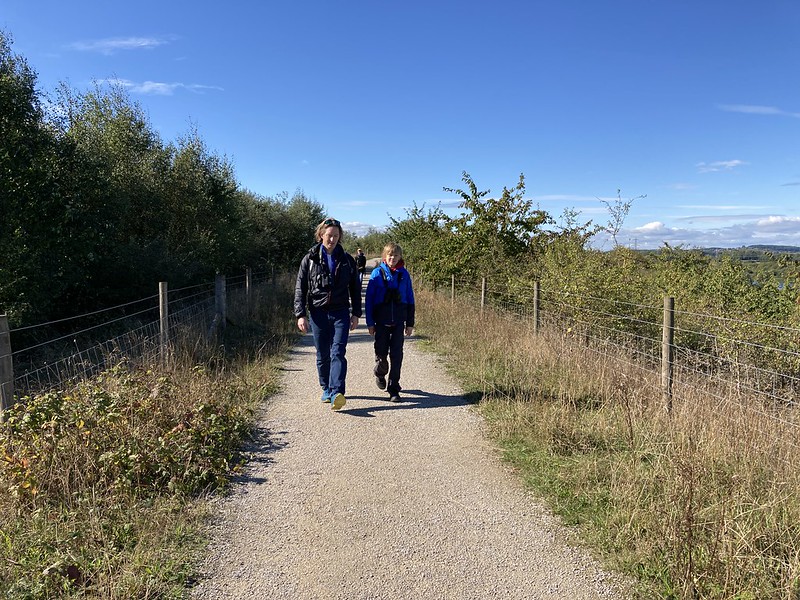
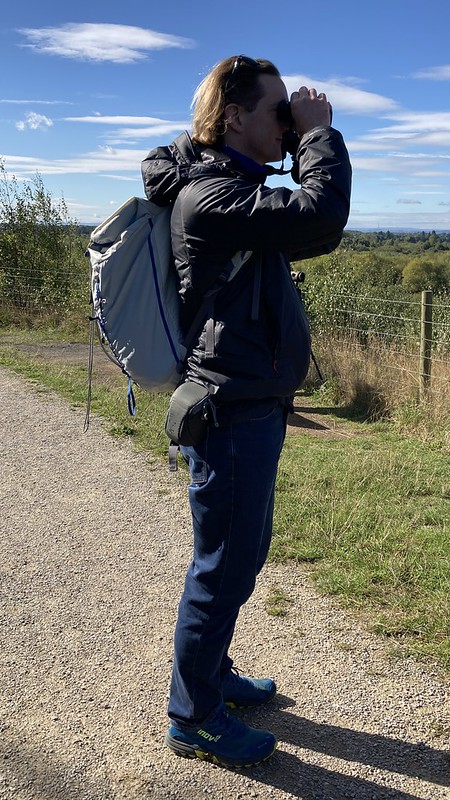

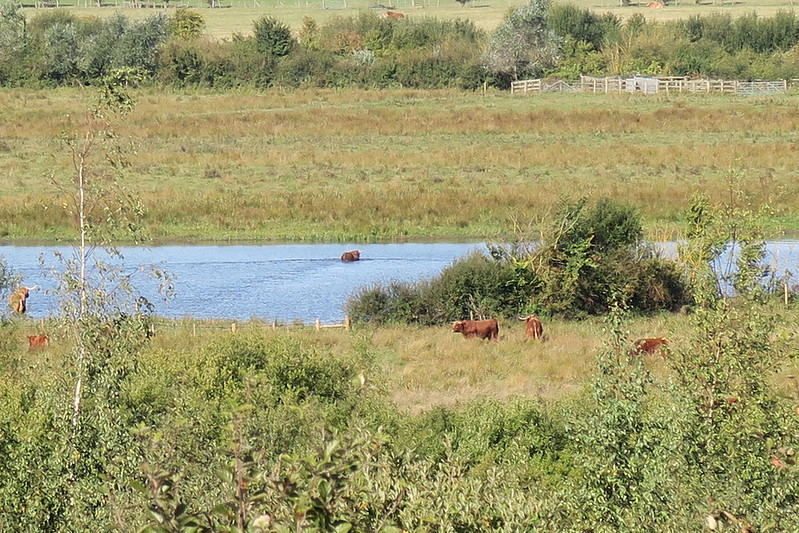
All too soon, the day began to wind down. With my son scheduled to attend a birthday party later that afternoon, we made our way back to the visitor center for some refreshments, a final chance to absorb the tranquility of the surroundings. Sipping our drinks, we reflected on the day’s sightings and the joy of sharing these experiences with like-minded enthusiasts.
As we drove away, leaving the expanse of Fairburn Ings behind us, I felt a profound sense of contentment. The reserve had offered not just a list of bird sightings, but a reminder of the beauty that can emerge when nature is given space to heal and flourish. It was a day well spent, and I looked forward to our next adventure, wherever that might lead us.
A Tranquil Afternoon at Blacktoft Sands RSPB Reserve
After dropping off my son the next day, my girlfriend and I decided to embrace the chance to get away and headed out to Blacktoft Sands RSPB Reserve. Situated where the River Ouse and the River Trent converge to form the Humber Estuary, this reserve is renowned for its expansive tidal reedbeds and rich birdlife.
From the moment we arrived, Blacktoft Sands exuded an atmosphere that felt authentically tailored for birders. The facilities were minimal, a small visitor center where a hot drink cost just £1.20, but this simplicity added to its charm. It reminded me of the times I spent with my grandfather at the Holme Norfolk Naturalist Reserve when I was young. Those memories of uncomplicated joy and a pure connection with nature came flooding back.
We strolled into the visitor center, which was more of a large, cozy shed warmed by a fire, with flasks of hot water ready for a comforting drink. Despite its modesty, it offered a lovely view across the reserve. The volunteers greeted us warmly and were eager to share updates. They mentioned that the lakes had recently been filled with water in preparation for the arrival of ducks, resulting in less mud and more shimmering water surfaces, a sign of the seasonal transition.
They suggested we start with the Ousefleet Trail, an 800-meter path from the reception leading to Ousefleet Hide. The trail begins by following the main path before veering off between Reedling and Marshland hides. From there, it becomes a grassy track, it promised excellent birdwatching opportunities. Without our usual experts from the local RSPB group, we armed ourselves with field guides, eager to practice our identification skills.
As we settled into Ousefleet Hide, we were greeted by a vibrant scene. The lagoons were teeming with Teals. Moorhens scurried along the edges, while Snipes skillfully camouflaged themselves among the reeds. Overhead, a Marsh Harrier glided gracefully. Judging by the pale coloring on its head, we guessed it was a female. Mallards paddled leisurely, and we spotted what we believed to be a Greenshank, identified by its dirty yellow legs and lighter underbelly.
A Wagtail flitted nearby, its tail bobbing characteristically, and a sudden flash of movement revealed a Sparrowhawk, sending smaller birds darting for cover. One of the highlights was observing a Pintail drake in eclipse plumage, its subtle hues blending seamlessly with the autumnal palette of the marsh.
After a while, we explore further. Blacktoft Sands features two linear trails that meander through willow and hawthorn trees before reaching several hides offering stunning views over the reedbeds and marshes. The Main Trail encompasses five hides, the nearest being just 90 meters from the reception and the farthest at 400 meters. Each hide provided a unique vantage point, and we were delighted to find more of the same species, especially the abundant Teals.
At the other lakes, we added Mute Swans, Shovelers, Gadwalls, Redshanks, and Lapwings to our growing list. The diversity and number of waterfowl were truly impressive, a testament to the importance of this reserve as a habitat.
The volunteers had mentioned that for year-round sightings of birds of prey, Singleton Hide was the place to go. Intrigued, we made our way there. The hide overlooked expansive reedbeds, and it wasn’t long before we spotted more Marsh Harriers patrolling the skies. Their effortless flight and keen hunting stirred a sense of awe. Knowing that Blacktoft Sands plays a crucial role in the conservation of these magnificent birds made the experience even more meaningful.
Throughout the afternoon, the simplicity and tranquility of Blacktoft Sands allowed us to fully immerse ourselves in the natural world. The lack of crowds and commercial distractions meant that the sounds of rustling reeds and distant bird calls were uninterrupted. It was refreshing to rely on our field guides, discussing and debating each sighting, enhancing both our knowledge and our appreciation for these creatures.
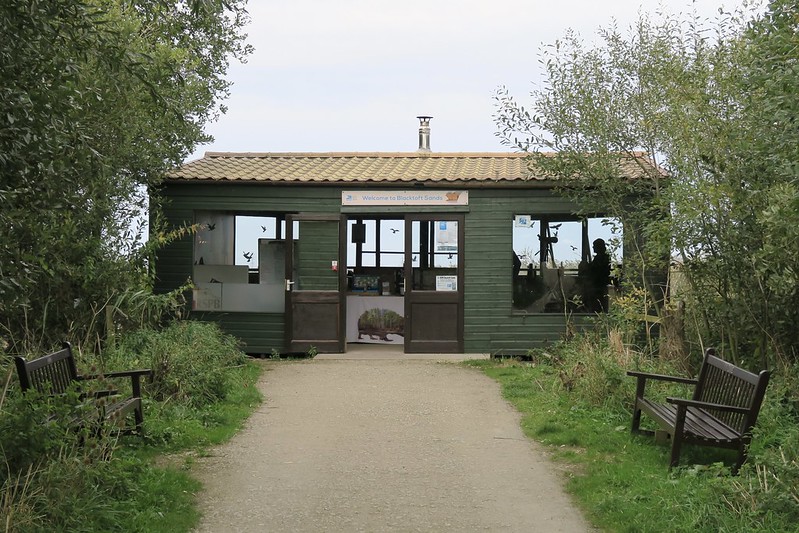
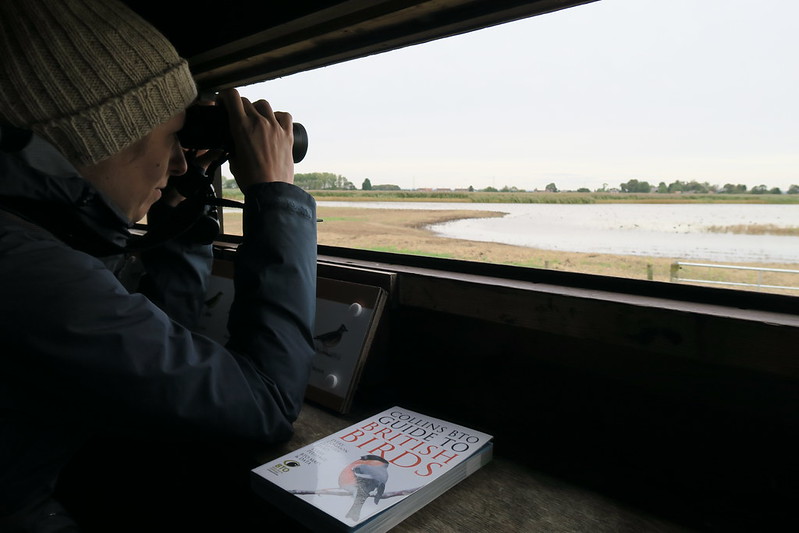

Reflecting on our visit, it’s clear that Blacktoft Sands is more than just a bird reserve; it’s a haven where conservation and pure enjoyment of nature coexist. The reserve is meticulously managed by the RSPB to maintain its diverse habitats, from reedbeds and lagoons to mudflats, providing sanctuary for a wide array of species. The efforts to control water levels and maintain the reedbeds are evident in the thriving wildlife we observed.
For anyone seeking a genuine connection with nature and an opportunity to witness a variety of birdlife, Blacktoft Sands is a gem. Whether you’re an experienced birder or a novice eager to learn, the reserve offers a peaceful retreat where the focus remains steadfastly on the natural environment.
As the sun began to dip, casting a warm glow over the marshes, we reluctantly made our way back to the reception. The day had been a delightful blend of nostalgia, learning, and quiet companionship. We left with not just a list of bird species spotted, but with a renewed sense of peace and a deeper appreciation for the simple joys that nature provides.
Exploring Spurn Point: A Windy Adventure into History and Nature
Our original plan was to stay at the Spurn Point campsite, Driftwood, in our little tent. However, it turned out they were fully booked. Undeterred, we looked for a last-minute Sunday evening hotel deal and found one for £47, which we snapped up immediately. Given the storm that came later, it might have been for the best!
The next morning, we battled through the traffic around Hull and made it out to the Spurn National Nature Reserve just in time for the opening of the visitor centre. The weather was particularly bad, with severe weather warnings gripping most of the country, it looked like we were going to get damp. But we weren’t about to let a little rain stop us.
After checking in with the friendly volunteers, we headed down the length of the point. The initial section, where the road has washed away, was hard going on the sand, but the rest of the route was on road or good paths. The washed-away road is a stark reminder of how Spurn is constantly changing, especially since it became a tidal island after the 2013 storm surge.
Despite the blustery winds and intermittent rain, we were rewarded with some fantastic wildlife sightings. We saw curlews gracefully probing the mudflats, a group of brent geese, redshanks, pheasants, mallards, and wigeons. In the shrubs, we caught a possible glimpse of a blackcap, and robins and magpies flitted about. One sobering sight was a dead grey seal washed up on the shore, it was larger than we’d expected up close.
As we wandered around, peering through our binoculars in the rain, we got a glimpse into the rich history of Spurn Point. We passed the remains of a World War One fire control centre, two lighthouses standing as sentinels against the grey sky, a coast guard tower, and the slightly ghostly modern village at the old RNLI station. The station now looks completely deserted, and when we first glimpsed it, it came as a surprise, a poignant reminder of the ever-changing human footprint on this landscape.
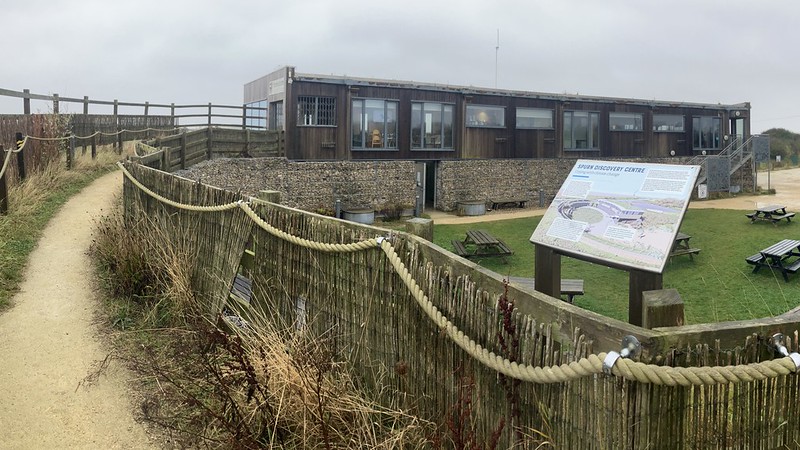
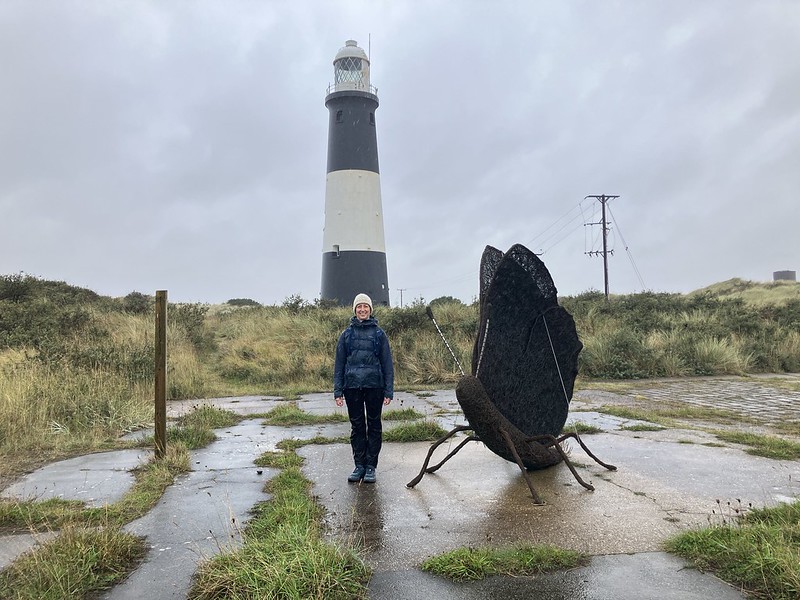
One of the most fascinating things we discovered was the ongoing nature conservation work. Information boards along the path told us about efforts to reintroduce native oyster beds. Oysters are incredible creatures that filter and clean seawater, improve habitats for other marine life, and even help combat climate change by encouraging the growth of seagrass, which absorbs carbon.
We felt like we had only scratched the surface of Spurn’s history and natural wonders, from its military significance during both World Wars to its role as a hub for Victorian visitors, and now as a vital nature reserve focusing on conservation efforts like oyster reintroduction.
By the time we made it back to the visitor centre, the rain was coming down harder. Escaping the weather, we settled into the café and enjoyed a warm jacket potato, a simple pleasure that felt luxurious after our windy trek. Before heading home, we took a short walk along the canal to soak in a bit more of the area’s charm.
With the bad weather intensifying, we decided to make tracks back home, wanting to allow plenty of time to drive safely. Despite the less-than-ideal weather, our trip to Spurn Point was an unforgettable adventure. The combination of rich history, diverse wildlife, and the raw beauty of a landscape shaped by the elements made for a unique experience. We can’t wait to return, hopefully on a sunnier day, to explore even more of what Spurn has to offer.